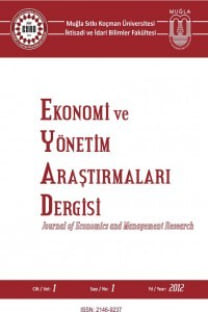TOPLUMSAL REFAH İLE SAĞLIK STATÜSÜ İLİŞKİSİNE KAVRAMSAL BAKIŞ
The opinion that healthcare service contributes to individual and social wealth is a widely accepted notion. Healthy individuals play a role in the development of their country by contributing to producing. According to the numbers of Human Development Index it is possible to state that in developed countries the level of social wealth is high. Besides economic indexes such as Gross National Income and Per Capita National Income, indexes such as education and health play a significant role in high social wealth of developed countries. The share that such countries allocate for social services and health is at a wanted level. Moreover, these countries developed and put various policies into practise in order to produce and serve necessary healthcare fairly so as to meet the healthcare needs of the society.The aim of this study is to indicate a conceptual frame of the relationship between social wealth and health status. In accordance with this aim this paper studies Abasolo and Tsuchiya’s “Health Related Social Wealth Function” HRSWF , which is claimed to be most widely accepted in the literature and developed by Bergson in 1938.In the light of the conclusions drawn from HRSWF if the presentation of healthcare service is carried out in accordance with the principle of equality and efficiency there will be an increase in the status of social health as a result of which social wealth will increase. It is possible to state that in the societies where social wealth is high the level of health status is high as well.Key Words: Social wealth, health status, economical developmentJel Classification: I15, I31, I14
CONCEPTUAL VIEW ON THE RELATIONSHIP BETWEEN SOCIAL WEEL-BEING AND HEALTH STATUS
The opinion that healthcare service contributes to individual and social wealth is a widely accepted notion. Healthy individuals play a role in the development of their country by contributing to producing. According to the numbers of Human Development Index it is possible to state that in developed countries the level of social wealth is high. Besides economic indexes such as Gross National Income and Per Capita National Income, indexes such as education and health play a significant role in high social wealth of developed countries. The share that such countries allocate for social services and health is at a wanted level. Moreover, these countries developed and put various policies into practise in order to produce and serve necessary healthcare fairly so as to meet the healthcare needs of the society. The aim of this study is to indicate a conceptual frame of the relationship between social wealth and health status. In accordance with this aim this paper studies Abasolo and Tsuchiya’s “Health Related Social Wealth Function” HRSWF , which is claimed to be most widely accepted in the literature and developed by Bergson in 1938. In the light of the conclusions drawn from HRSWF if the presentation of healthcare service is carried out in accordance with the principle of equality and efficiency there will be an increase in the status of social health as a result of which social wealth will increase. It is possible to state that in the societies where social wealth is high the level of health status is high as well
___
- Abasola I., and Tsuchiya, A. (2004) Exploring Social Welfare Functions and Violation of Monotonicity: an Example from Inequalities in Health, Journal of Health Economics, Vol. 23, No:2: 313- 329.
- Akalın G. (1986) Kamu Ekonomisi, Ankara Ünversitesi S.B.F. Yayınları No: 54, Ankara.
- Bloom D.,E, Canning, D., Jamison D.,T. (2004) Health, Wealth, and Welfare, Finance ∞ Development, Vol. March, 10-15
- Bommer A., and Stecklov, G. (2002) Defining Health Inequality: Why Rawls Succeeds Where Social Welfare Theory Fails, Journal of Health Economics, Vol.21,No.3: 497- 513.
- Culyer A. J. (1989) The Normative Economics of Health Care Finance and Provision, Oxford Review of Economics Policy, Vol.5, No.1:, 34- 58.
- Ekonomi ve Yönetim Araştırmaları Dergisi / Cilt:6 / Sayı:2 / Aralık 2017 Journal of Economics and Management Research Vol:6 / No:2 / December 2017 59
